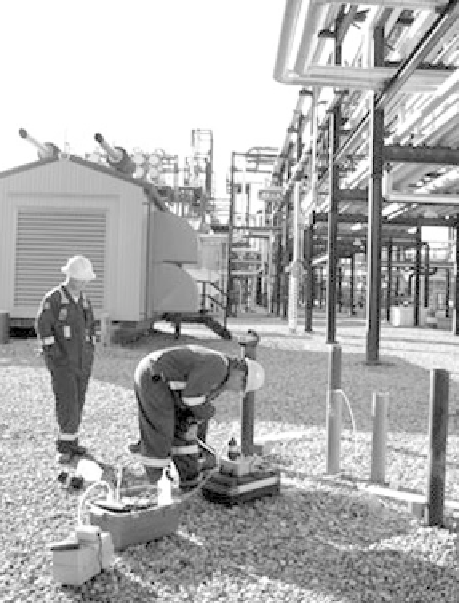Environmental Engineering Reference
In-Depth Information
Fig. 17.6
An example of a
groundwater sampling
activity at an industrial site in
Alberta, Canada (photo:
courtesy of Alberta Innovates
- Technology Futures;
reproduced with permission)
of poor construction and maintenance of wells can cause local contamination at the
well, which is not necessarily related to the contamination of the aquifer (Vrba and
Lipponen
2007
). From these restrictions it can be concluded that it is difficult to get
a detailed picture of the contaminant pattern in groundwater.
At most contaminated sites, only the upper groundwater is sampled. This is
simpler and cheaper, and for most Risk Assessments the quality of the upper ground-
water is the most relevant. For deeper groundwater quality, the risk assessor is often
dependent on data from public-production wells, although data on raw water qual-
ity may be difficult to obtain from the waterworks. Moreover, in deeper wells water
from different origins may have been mixed.
In Lamé (
Chapter 3
of this topic) the procedure for sampling has been described
primarily from a practical perspective. In Brus (
Chapter 4
of this topic) this
procedure is approached from a statistical perspective.
17.6.3 Lysimeters and Column Experiments
Contaminant transport cannot be measured directly in the field. It is possible, how-
ever, to monitor groundwater concentrations which indirectly relate to contaminant
transport. There are several other experimental procedures that are used to assess

Search WWH ::

Custom Search